| |
Everglades
PROJECTS |
|
There are so many !
And - the project name does not mean just one job.
Usually there are quite a few sites in that area being worked on.
Look at the larger efforts that are often mentioned.
» Read more
- -
on web sites of organizations involved in project work : SFWMD and US-ACE
|
LOOK AT
MAP |
Florida drainage impacts:
South-flowing water has been diverted through canals to the sides of the peninsula - the results:
GOOD:
(a) Less catastrophic flooding.
(b) Land for agriculture & urban development.
BAD:
(c) Everglades ecosystem drastically altered - 50% shrunk, animal species threatened.
(d) Agriculture and urban development bring heavy water pollution that further poisons both the slow-moving fresh water AND estuaries.
(g) Florida fishery industries threatened.
(f) Florida tourism threatened.
(h) Diminishing underground aquifers - So.Florida fresh-water supply threatened.
» Read more
 Read up on projects
Read up on projects
The
projects are mainly executed by:
 US Army Corps of Engineers
US Army Corps of Engineers
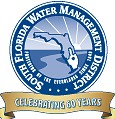
South Florida Water
Management
District

US Geological Survey
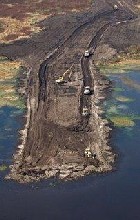
South Florida Water
Management District project in Hendry County
|
|
|
|
 FLORIDA IS SPECIAL FLORIDA IS SPECIAL
Its geography and climate pose unique challenges :
(1) Florida is sooo FLAT !
(2) Florida gets 60 inches (>150 cm) of rain per year -
- all in the rainy season (May - October) .
All that water moves away into the ocean only very slowly. The situation is sometimes aggravated by storms and hurricanes.
Our forefathers decided to prevent floods by digging canals and drains - 1200 miles of them. They did not know that this major disruption of nature will change the environment - threatening also water supplies to the burgeoning population of the South !
To correct for this - is what the current discussions and projects work are all about.
» Read more - -

Biscayne Bay mangroves and coastal
wetlands maintained
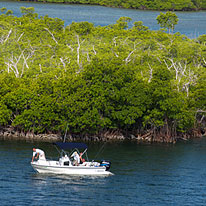
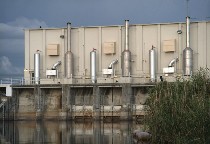
Huge pump stations to control the water
flow from Lake Okeechobee
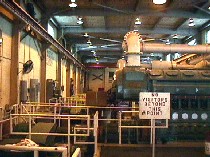
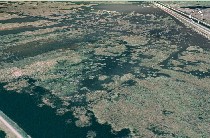
Abandoned A-1 reservoir project
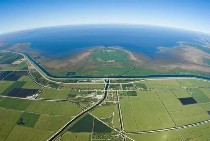
Lake Okeechobee and adjacent Everglades
Agricultural Area that is the subject of the
recent purchase deal (US Sugar Co.)

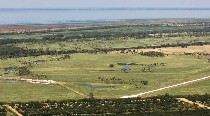
Brady Ranch land for the STA wetland
construction
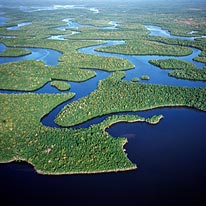
C-111 Spreader Canal area. The project will
assure sheetflow of fresh water into Florida
Bay with pump stations, culverts, a spreader
canal and plugs/water control structures.

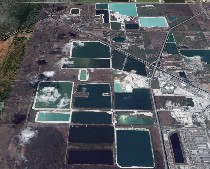
C-11 Impoundment Area - will receive
stormwater from the western C-11
watershed, increasing thus groundwater
levels for water supply and preventing salt
water intrusion.
|
|
FLORIDA
EVERGLADES - MAJOR CURRENT PROJECTS
Mouse-Over a Project sign for pop-up PHOTO (where available) - click anywhere photo OFF
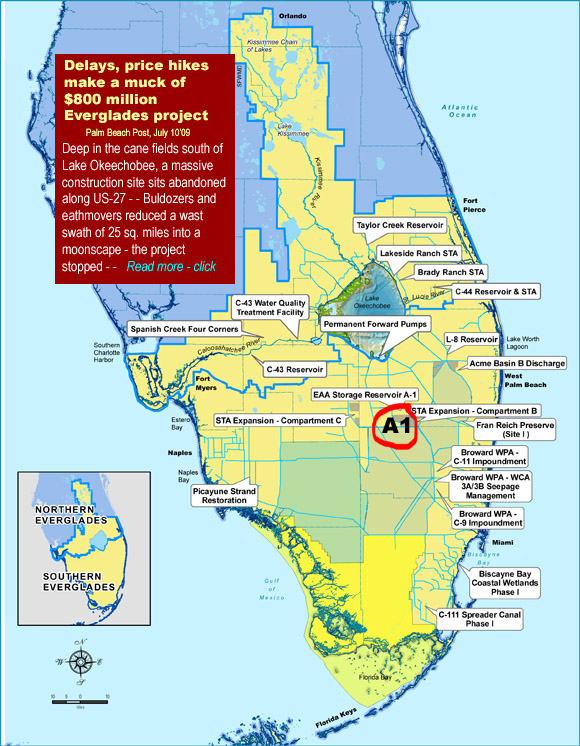
Click here for a Larger Interactive SATELLITE Map
ZOOM IN for a "helicopter view"
| Current Water Flow Pattern: |
Pre-drainage Water Flows: |
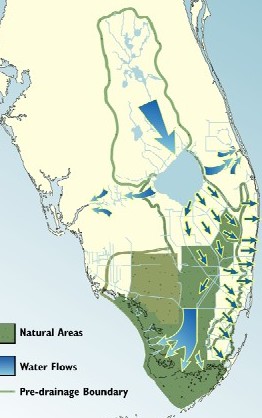 |
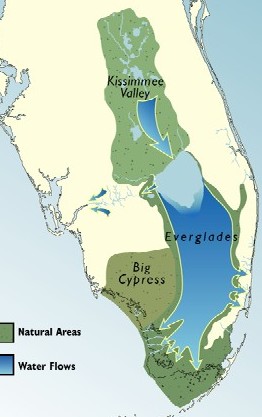 |

|
Look at where your $$ go :
Can you make sense of these 2 articles ?
|
Reservoir A1
$ 272 million
for
moonscape ? |
Delays, price hikes make a muck of $800 million Everglades
project
Palm Beach Post - July 10, 2009 (PAUL QUINLAN, Staff Writer)
Deep in the cane fields south of Lake Okeechobee, a massive construction site sits abandoned along U.S. 27, its dreams for the Everglades unfulfilled.
Bulldozers and earthmovers reduced a vast swath of these 25 square miles to a gray moonscape of pooled water and piled rock - traces from what was supposed to have become the world’s largest free-standing reservoir.
Officially called the A1 Reservoir, this environmental Stonehenge carried an $800 million price tag and big-name endorsements from the likes of Al Gore and Jeb Bush.
The plan was to build an above-ground lake of colossal dimensions to feed water into the parched Everglades. It would be nearly the size of Boca Raton and hold more water than 100,000 Olympic-size swimming pools. Its 22-mile perimeter wall would stand three stories tall. Construction was slated to end next year.
Instead, the project has become one of the most expensive false starts in the largely fruitless effort to restore the Everglades, in which the A1 Reservoir was a crucial element.
Two years and $272 million into construction, the South Florida Water Management District suddenly ordered work on the reservoir halted in May 2008. Six months later, water managers canceled construction altogether, incurring fees and penalties that could add up to another $40 million.
The land may still be used to repair the Everglades, but much of the money spent can never be recaptured - for example, $113 million to build a rock-crushing plant that contractors later dismantled. And about 200 workers who say they were promised at least three years of work were laid off.
The shutdown coincided with Gov. Charlie Crist’s announcement of an even bolder and costlier Everglades restoration initiative: a $1.75 billion state buyout of U.S. Sugar Corp. and its 180,000-acre farming empire, land perfectly situated to recreate the historic flows of the Everglades.
Water managers say Crist’s U.S. Sugar deal, made public in June 2008, did not influence their decision one month earlier to halt work on the A1 Reservoir. But today, officials concede they cannot afford to pay for both at once, even though Crist has trimmed the U.S. Sugar deal to $536 million for 73,000 acres.
The land deal will require scrapping the reservoir plan, as the larger Everglades restoration blueprint is overhauled to incorporate the new acreage. It’s worth it, say the governor and his environmental allies, who view the U.S. Sugar deal as a historic opportunity.
“I think the benefits of doing better in the long run far exceed the costs,” said district board member Shannon Estenoz.
But others question whether the change of course was worth the extraordinary expense - not to mention the delay in rescuing an ecosystem on the verge of collapse.
“What the district has done was to walk away from the original Everglades restoration plan,” said Mike Collins, a district board member and critic of the U.S. Sugar deal. “We were ready to go, and now we’re in limbo.”
The A1 Reservoir project grew out of its own celebrated land purchase.
In December 1997, then-Vice President Gore announced that the state and federal governments would buy out the Talisman Sugar Corp. The 63,000 acres acquired in the $152 million deal would be used to store and cleanse billions of gallons of water to help hydrate the Everglades.
Completed in 1999, it was at the time the largest single land deal aimed at Everglades restoration. Years later, the water district carved out a 16,700-acre portion and called it the A1 Reservoir.
The reservoir was to be a keystone of a 68-piece, $10.9 billion Everglades restoration plan that Congress passed in 2000. The deal called for the state and feds to split the costs 50-50, but bickering between the parties and a lack of money from Congress ground the restoration to a crawl.
Estenoz said she’s hopeful that the days of inertia are over for the restoration, based on promises from the Obama administration to loosen the flow of dollars from Washington.
“The problem over the last eight or nine years has been one of leadership,” she said.
Gov. Bush thought as much in 2004, when he proposed to break through the paralysis with “Acceler8,” a $1.5 billion program in which the district would borrow the money to build the 62-billion-gallon A1 Reservoir and other Everglades projects.
New obstacles arose, however. For one, the reservoir’s estimated $400 million price tag doubled, which the state blamed on rising construction costs and tougher levee-construction standards set after Hurricane Katrina.
There were other, more questionable expenses that the contractor, Barnard Parsons Joint Venture, tried to add to the bill - about $18 million worth, a district audit reported. For example, the audit found that the company charged wear-and-tear on its pickup trucks that amounted to twice the cost of replacing the entire fleet.
In another cloud over the project, the Natural Resources Defense Council and two other environmental groups sued the Corps of Engineers in May 2007, demanding assurances that the reservoir would serve only the Everglades, not farms or development.
The groups explicitly said they did not want construction halted. But the district did just that one year later, citing uncertainty over the suit’s outcome. Environmentalists were dumbfounded.
“We actually wrote them a letter and said, ‘This is ridiculous,’” said NRDC attorney Brad Sewell. “It was pretty clear they were going to blame it on us.”
A month later, Crist went public with news of the U.S. Sugar deal, which the state had been negotiating for months. The A1 plans would have to change.
Unmentioned was a full accounting of the penalties for shutting down the reservoir project: Six monthly payments of $1.9 million to suspend the project. An additional $1.5 million payment for canceling the contract. And as much as $26 million to break down the construction operation.
Meanwhile, the jobs that the state had repeatedly boasted of disappeared.
“They were tossing 200 onto the job market in Belle Glade,” said Troy Mann, one of the workers, who have since filed a class-action suit against the district and contractor. “Most of them couldn’t get work. ... It was a terrible disaster.”
As for that NRDC lawsuit, a judge in June dismissed the case as moot, noting that the A1 Reservoir has been scrapped.
In the final order, U.S. District Judge Donald Middlebrooks quotes former Chief Justice Warren Burger: “It is not the function of the judiciary to provide ‘effective leadership’ simply because the political branches of government fail to do so.” |
Money still well spent
Palm Beach Post - Editorial, July 21, 2009
http://www.palmbeachpost.com/opinion/content/opinion/epaper/2009/07/21/a6a_talisman_edit_0722.html
It’s hard to throw away as much as $40 million in public money and call it a cost savings. But that’s essentially what the South Florida Water Management District is saying about its decision to halt construction in western Palm Beach County of the world’s largest above-ground reservoir.
As The Post reported on July 12, the district stopped construction of the A1 Reservoir last year at a pivotal point. The district had spent $272 million preparing the site, particularly by carving out a 22-mile perimeter. The next stage, at a cost of $330 million, called for building 12-foot-high walls along the perimeter to turn the former sugar cane field into a humongous bathtub.
After a lawsuit challenged the U.S. Army Corps of Engineers permit the district obtained for the project, district officials stopped work before erecting the walls. If the permit had been ruled invalid, the district would have had to dismantle the walls. So, on behalf of the public, the district swallowed $2 million a month - the total could be as much as $40 million - in fees to suspend the contract.
One month later, Gov. Crist announced plans for the water management district to buy U.S. Sugar. That deal - now just for part of the company’s land - was a show-stopper. It changed everything about how the A1 Reservoir, on the former Talisman cane fields, would fit into the new picture of Everglades restoration. Since then, the district has stopped the contract on the A1 Reservoir and shelved the project.
But the completed work is not worthless. It could prove invaluable.
To preserve the Everglades, the district needs to store and clean water. With the U.S. Sugar purchase, the district no longer would need to store water on the Talisman land because it would be more practical to store water farther north, next to Lake Okeechobee. Instead of a reservoir with 12-foot walls, the Talisman lands would be converted more productively into a marsh that would cleanse polluted water before it is released into the Everglades. The construction that has been done could prove useful in creating the marsh.
Palm Beach County wasted millions by ignoring lawsuits and starting to build a Scripps Florida campus at Mecca Farms. The water district came dangerously close to a similar mistake with the A1 Reservoir, but pulled back before reaching the point of no return. There may be reason for the public to be a little frustrated, but there is no reason for the public to be angry. |
|



